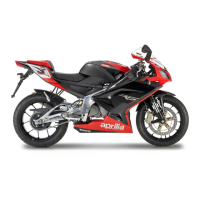
Do you have a question about the APRILIA RS 125 - 02-2010 and is the answer not in the manual?
| Displacement | 124.8 cc |
|---|---|
| Transmission | 6-speed |
| Front tire | 110/70-17 |
| Rear tire | 150/60-17 |
| Engine Stroke | 2-stroke |
| Max Power | 15 hp (11 kW) @ 9, 750 rpm |
| Fuel System | Carburetor |
| Ignition | Electronic |
| Cooling System | Liquid |
| Front Suspension | Upside-down fork, 40 mm |
| Rear Suspension | Monoshock |
| Front Brake | Single 300 mm disc, 4-piston caliper |
| Rear Brake | Single 220mm disc, single-piston caliper |
| Seat Height | 820 mm |
| Fuel Capacity | 14 liters |
| Top Speed | 120 km/h |
| Bore x stroke | 54 mm x 54.5 mm |
| Engine Type | Single-cylinder, 2-stroke |
Introduction to the manual and vehicle.
Safety precautions regarding exhaust emissions.
Handling and safety guidelines for fuel.
Warning about hot engine and exhaust parts.
Hazards associated with coolant.
Safe handling and disposal of used oils.
Hazards of brake fluid and protective measures.
Safety precautions for battery acid and gases.
Proper use and safety checks for the vehicle stand.
Procedures for reporting safety-related defects.
Identification of key vehicle components.
Overview and controls of the instrument panel.
Description of the analog instrument panel displays.
Explanation of indicator and warning lights.
Procedures for setting odometers.
How to set the clock time.
Instructions for using the chronometer function.
Explanation of the function of control buttons.
Description of advanced display functions.
Operation and functions of the ignition switch.
How to lock the steering wheel for security.
Operation of the horn.
How to operate the turn signal switch.
Adjustment of the gear shift lever.
Operation of the headlight beam selector.
Function of the passing light button.
How to start the engine using the starter button.
Function of the engine stop switch.
Operation of the manual starter control.
Procedures for accessing and removing the fuel tank.
Information about the mixer oil tank and its importance.
Instructions for removing and refitting the saddle.
Location and access to the glove/tool kit.
Importance of vehicle identification numbers.
Importance of performing pre-ride checks for safety.
Detailed list of pre-ride inspection items.
Checking throttle operation and lubrication.
Checking and topping up mixer oil.
Checking and topping up gearbox oil.
Inspecting tyre condition, pressure, and wear.
Checking brake lever operation and lubrication.
Checking steering rotation and clearance.
Checking clutch lever free travel and operation.
Checking side stand operation and lubrication.
Steps for refueling the vehicle safely.
How to adjust the rear shock absorber spring preload.
Procedure for adjusting the rear brake pedal height.
How to adjust the clutch lever free play.
Guidelines for engine break-in for longevity and performance.
Procedures for starting the engine safely.
Troubleshooting tips for difficult engine starting.
Initial riding instructions and precautions.
Explanation of downshifting procedures.
Step-by-step guide for downshifting gears.
How to safely stop the engine.
Guidelines for parking the vehicle safely.
Information about the catalytic converter and its maintenance.
Proper use of the side stand.
Tips and precautions to prevent vehicle theft.
How to check the gearbox oil level.
Procedure for changing the engine oil.
Information on tyre types and general care.
Importance of checking tyre pressure regularly.
How to remove, clean, and inspect the spark plug.
Step-by-step guide to removing the air filter.
Procedures for cleaning the air filter element.
How to check and maintain the coolant level.
Procedure to check the brake fluid level.
How to top up brake fluid safely.
Safety precautions when working with the battery.
Steps for installing a new battery.
How to check the battery electrolyte level.
Instructions for charging the battery.
Procedures for storing the vehicle for extended periods.
Location and function of fuses, and replacement advice.
Information on replacing vehicle bulbs.
How to adjust the headlight beam correctly.
Procedures for replacing rear light bulbs.
How to adjust the engine idle speed.
Important safety checks for the disc brake system.
Procedures for storing the vehicle for extended periods.
Guidelines for cleaning the motorcycle safely.
Information on the transmission chain and its maintenance.
How to check the chain's backlash.
How to adjust the chain's backlash.
How to check wear on chain, sprockets, and crown.
Procedures for lubricating and cleaning the chain.
Specifications for the vehicle's physical dimensions.
Engine specifications and type.
Fluid capacities for various vehicle systems.
Type and lubrication of the gearbox.
Detailed gear ratio specifications.
Carburettor model and quantity.
Fuel type and specifications.
Chassis type and geometry specifications.
Front and rear suspension specifications.
Specifications for the front and rear brake systems.
Specifications for the wheel rims.
Tyre size and specifications.
Ignition system type and advance specifications.
Recommended spark plug type and electrode gap.
Specifications for battery, fuses, and generator.
Specifications for all vehicle bulbs.
Identification of dashboard warning lights.
List of included tools and their specifications.
Overview of scheduled maintenance tasks and intervals.
Maintenance tasks required every 500 km.
Maintenance tasks after the initial run-in period.
Maintenance tasks required every 1000 km.
Maintenance tasks required every 1500 km.
Maintenance tasks required every 2000 km.
Maintenance tasks required every 4000 km or 12 months.
Maintenance tasks required every 8000 km or 24 months.
Maintenance tasks required every 2 years.
Maintenance tasks required every 12000 km.
Maintenance tasks required every 16000 km.
Maintenance tasks required every 4 years.
List of recommended lubricants and fluids.
Index of available special tools and accessories.
Procedures for removing and refitting fairings.

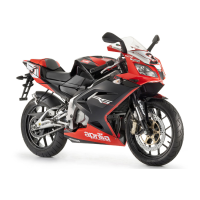

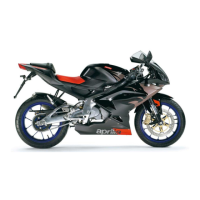
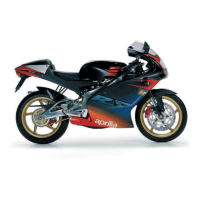
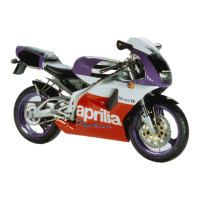
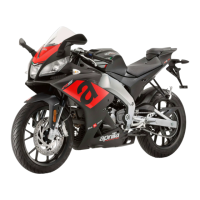


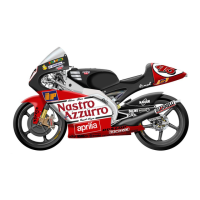

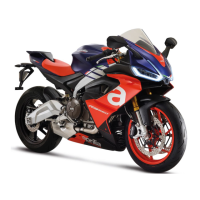
